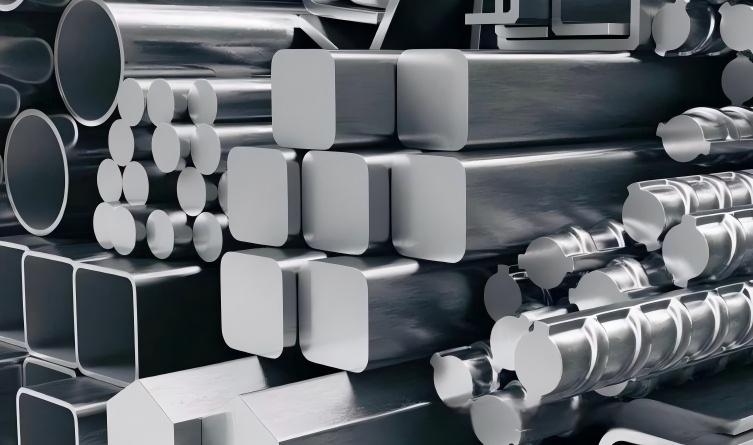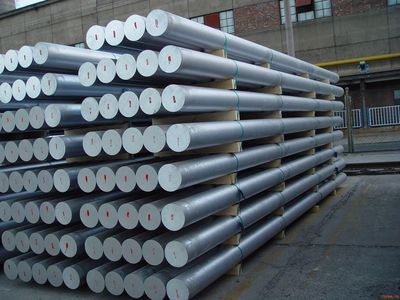Beautiful Plants For Your Interior
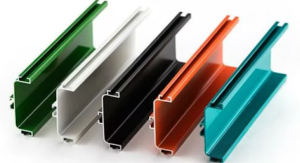
Aluminum alloy extrusion principle
Utilizing the plastic deformation property of metals: Place the aluminum alloy billet that has been heated to a softened state (usually at 350-500℃) into the barrel of the extruder. Through extrusion, the billet is forced to flow out through the mold holes (the molds also need to be heated) and finally forms profiles with the cross-sectional shape of the mold holes.

During this process, the aluminum alloy undergoes plastic flow and section reformation: The metal particles within the billet move along the direction of the mold cavity, the grains are elongated and re-arranged, and the material’s mechanical properties can also be enhanced through deformation strengthening.
Common materials and their applications
Aluminum alloy materials suitable for extrusion molding include the 2XXX series, 6XXX series and 7XXX series, among which the 6 series is the most widely used due to its relatively high cost-effectiveness.
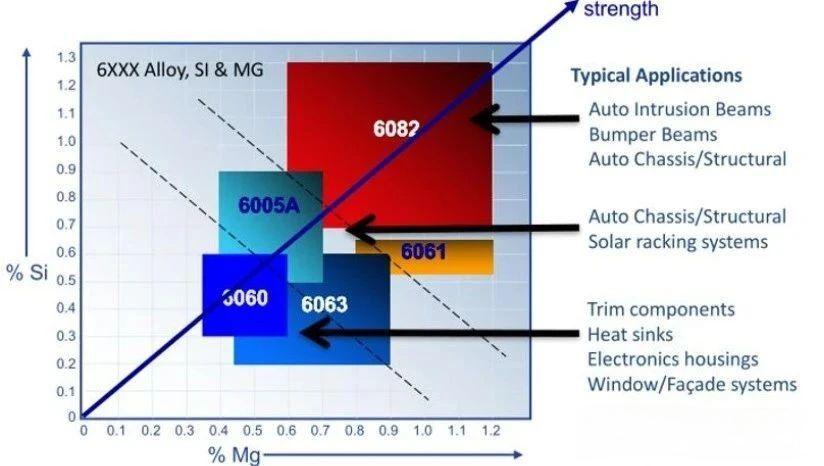
- 6 Series aluminum alloy
(6061, 6063, 6005, 6082): Due to their content of Mg and Si, they have good extrusion properties. After heat treatment (T6), they have moderate strength and a relatively low cost, making them the most commonly used extrusion materials in new energy vehicles.
Case 1: Battery housing: Aluminum alloy extruded side beams and frames, with relatively large structural dimensions (about 2 meters), thus requiring a large-tonnage extrusion machine (≥ 5000 tons); Common material strengths: 6061-T6 > 6005A-T6 > 6063-T6, and the extrusion process difficulty follows the same gradient.
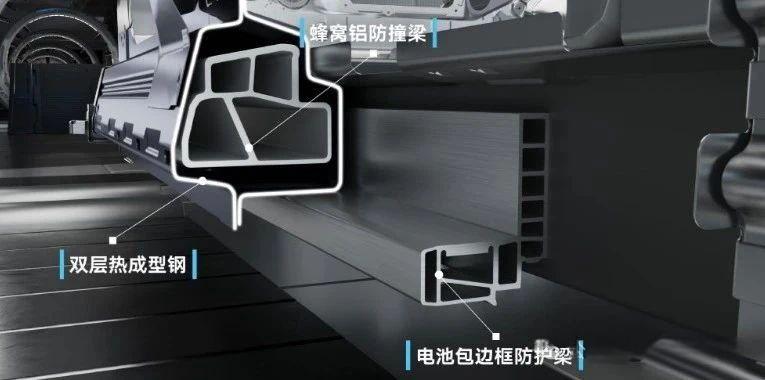
Case 2: Motor housing: The housing is made of 6061 extrusion with a complex cross-section that integrates cooling water channels. At the same time, the heat dissipation performance of 6061 is better (thermal conductivity 201 W/(m·K))

- 7 Series aluminum alloy
7075: Extremely strong, but difficult to extrude (requires higher pressure and more precise molds). It is suitable for parts with strict strength requirements, such as the aluminum extrusion parts used in the Audi A8 (blue in the figure)
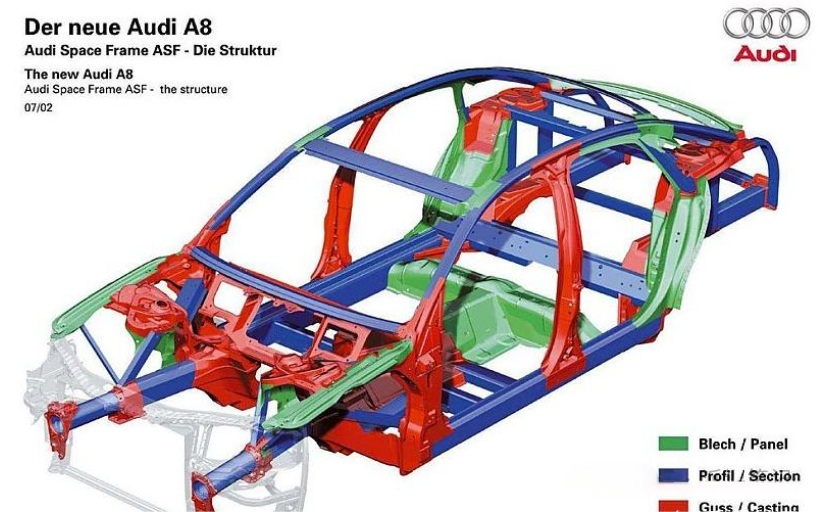
- 5 Series aluminum alloy
5052: It has excellent corrosion resistance, but its strength is relatively low. It is suitable for scenarios with low stress and high corrosion resistance, and is widely used in the construction industry.
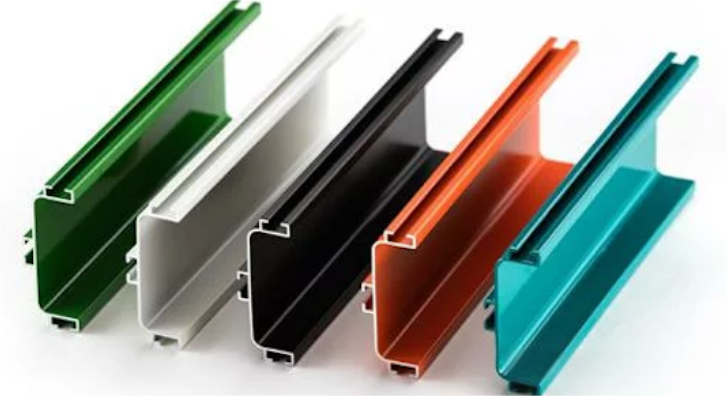
The difficulties of the extrusion process
- Die design and manufacturing
For complex cross-section molds, it is necessary to precisely calculate the metal flow velocity to avoid cracking due to excessive local flow speed (such as at thin-walled areas) or insufficient filling due to too slow flow speed. The processing accuracy of the molds needs to reach ±0.01mm, which is costly.
- Dimension accuracy control
Due to the thermal expansion and contraction of the materials and the fluctuation of the extrusion speed, the parts are prone to dimensional deviations (such as a straightness error exceeding 0.5mm/m), which need to be corrected through stretching straightening and subsequent processing.
- Surface quality issue
Defects such as scratches, residual oxide scale, and bubbles may occur. The surface quality of the billet and the smoothness of the mold (Ra ≤ 0.8 μm) must be strictly controlled.
- Extrusion of large-sized parts
For the battery housing of new energy vehicles (with a length exceeding 2 meters), a large-tonnage extrusion machine (≥ 5000 tons) is required, and it is prone to deformation due to uneven metal flow.
The design features of the extruded parts
- Extruded part dimensions
The dimensions of the extruded parts are determined by the minimum enveloping diameter (CCD). As shown below, this is an example of structural optimization to reduce the CCD. The CCD should be minimized as much as possible.
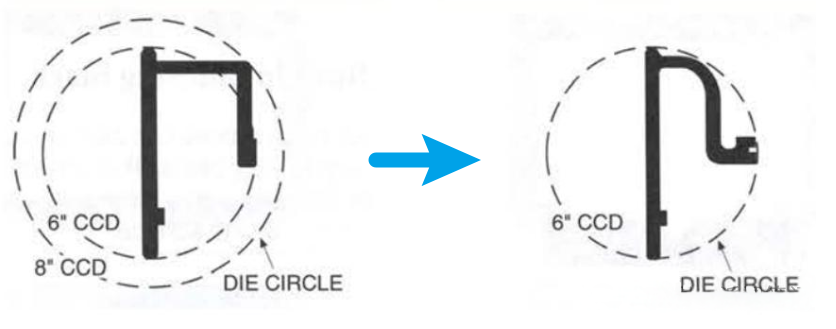
- Avoid asymmetrical structures
The cross-sectional structure is symmetrical and simple: Asymmetric and unbalanced cross-sectional shapes increase the complexity of extrusion production and are prone to cause quality problems: Dimension accuracy is difficult to guarantee, flatness is difficult to ensure, the parts tend to warp at the center, production efficiency is low, and the molds are prone to wear during mass production.
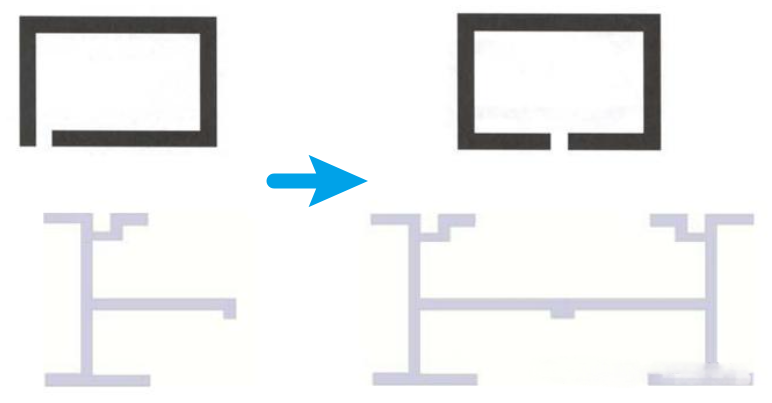
- Wall thickness size
The wall thickness of the extruded part is related to the material, shape and the outer circle diameter (CCD) of the part. The extrusion shape also affects the design of the wall thickness. As shown in the figure below, the red part represents a tubular structure and the blue part represents a non-tubular structure. As the CCD increases, the most suitable wall thickness also increases accordingly.
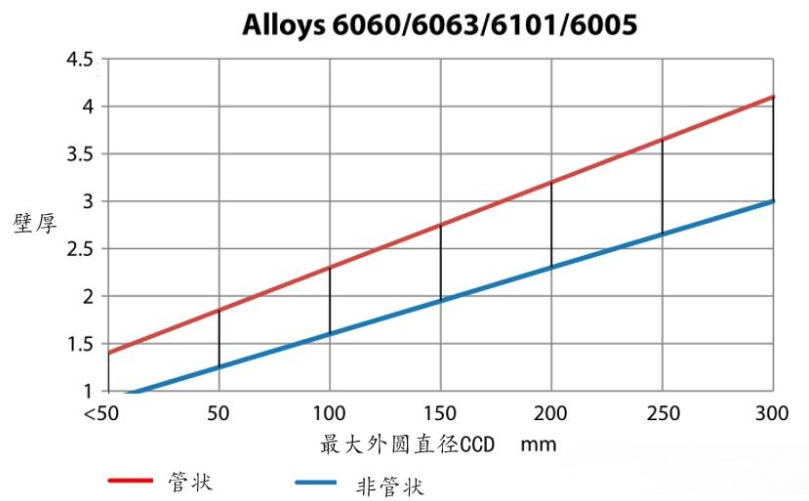
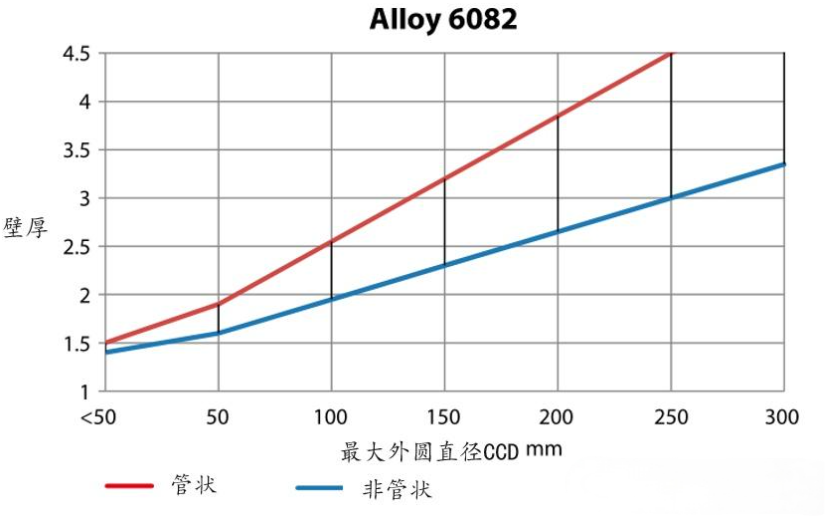
- Tolerance matching
The assembly tolerance for other components (such as battery modules) should be ≥ 0.1mm to prevent assembly difficulties caused by dimensional fluctuations during extrusion. At the same time, the tolerance for the thickness dimension of the parts should take into account performance requirements and leave design margins.
The mechanical properties of extruded aluminum alloy
Question: After the aluminum alloy is extruded, does the material properties of the resulting parts change? Have they weakened or strengthened? How is the material properties set during the design process?
Answer: Generally, the extrusion process leads to grain refinement and an increase in strength through work hardening, resulting in an increase in dislocation density and a decrease in elongation. The specific changes in the performance of the extruded material depend on parameters such as extrusion pressure, temperature, and speed. Even the aging treatment method of the extruded parts can affect the performance. Therefore, actual testing is necessary for reliability. During the design phase, one can appropriately refer to the performance of the raw materials and retain sufficient design margins.

